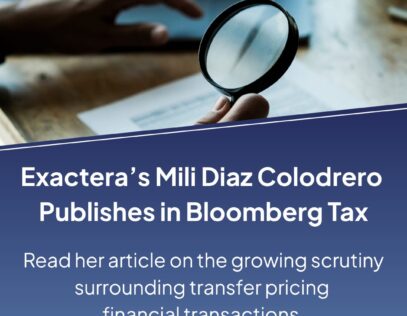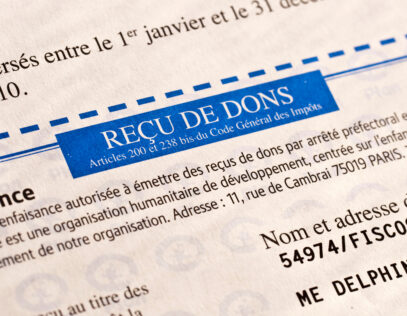Dyno Nobel Saves 67% on the Cost of Global Transfer Pricing Compliance—and Gets Back 10% of the Tax Department’s Time
Dyno Nobel’s Tax Director and Risk Manager Milan Crane, CPA, knows that when it comes to transfer pricing compliance, “less can be more.” Overly wordy reports only serve to raise suspicion and invite unwanted questions from auditors and tax authorities, so he prefers a strategic, minimalist approach to transfer pricing narratives. Reports must include all the required information, data, and analyses, of course—but written explanations should be succinct and to the point without redundancy.
His thinking makes sense not just from a compliance standpoint, but also from a managerial one. Crane’s bare-bones department consists of just four tax professionals, who tackle —multiple jurisdiction income tax returns, tax provisioning, transfer pricing compliance, R&D tax credit claims, indirect tax, and so on. Time is always of the essence, and there isn’t a second to spare on unnecessary transfer pricing commentary.
A chemical and explosive manufacturer regionally based in Utah, Dyno Nobel has intercompany transactions with entities all over the world—Australia, Canada, Mexico, Peru, Chile, New Zealand, Turkey, South Africa, among other countries—and the business is still expanding. For a short time, the tax department handled transfer pricing compliance in-house but then decided to outsource compliance using a revolving door of consultants.
“We have to choose service providers that we can rely on to do a really good job, freeing us up to do the tax analysis that we really need to be focused on. Sometimes that gets short-changed if you’re spending a lot of time dealing with compliance-related activities,” says Crane.
During his 17-year tenure at Dyno Nobel, Crane has outsourced to various firms. Two boutique consultants proved unreliable. “There were times when I wondered if I was going to get a report at all,” he recalls. Later, he turned to a Big Four provider, but eventually found the offerings inflexible for a growing company.
“It seemed like the contractual relationship with the Big Four firm always centered on ‘define your transactions precisely upfront,’ and “that’s what they will do for you. If something came along after the fact, it was hard to add it,” Crane says. “It was too rigid. Day one I would have to identify everything. What if I missed something?”
The reports were problematic as well. Crane found that outside providers tended to expound upon data that had already been explained in the numbers, a dangerous practice that could only serve to invite inquiries—and add on to already costly consultancy fees.
“The analyses that we had seen done by multiple providers seemed to focus on the minutia,” says Crane. “I would get voluminous reports that didn’t require all of that explanation. I thought, ‘Is that what I’m paying for? Is that why costs are so high?’”
Addition by Subtraction
Crane sought more continuity, reliability, and an approach that offered more flexibility—one that evolved with the business and was able to pivot as needed. He also understood that not all jurisdictions prioritize transfer pricing the same way—and he wanted to devote the most attention to the transactions that required it.
“In the U.S., I might feel that transfer pricing compliance is essentially a commodity, but my boss in Australia views it as critical because of the aggressiveness of the Australia Taxation Office,” he says.
Six years ago, he turned to Exactera to provide a global solution for Dyno Nobel and its parent company.
“Exactera’ approach was more fluid. In an expanding global business, that was critical,” says Crane.
Best of all, Exactera’s technology produced clean, easy-to-understand reports. “I liked the presentation style. What other companies were doing in five pages, Exactera could do in one,” he says.
Concise reports weren’t only an advantage with tax authorities—they enabled Dyno Nobel’s small team to update information and give feedback more efficiently, adding to the small team’s productivity on other fronts.
“With Exactera’s reports, the areas that need changing are easy to identify,” says Crane. “When the Senior Tax Manager and I receive reports, it’s very easy for us to go into particular sections and make changes. Our input is about 50% of what we used to have to do on other more voluminous reports. Exactera narrows the contribution needed from our team, but the documentation still accomplishes what we need it to,” he says.
Time isn’t the only savings Dyno Nobel has experienced with Exactera. They’ve saved money as well. “We are spending about 33% of what we were previously spending to fulfill our global transfer pricing documentation needs,” says Crane. And because he could add or subtract jurisdictions and transactions throughout the process, the coverage was more comprehensive.
“If finance makes an intercompany loan and we’re slow to receive documentation on the tax side, then we look at it and say, ‘OK, here is the interest expense on a long-term loan and we have to cater to it from a tax perspective.’ We can add that to be reviewed by Exactera,” says Crane, who also exercises the option of bypassing certain transactions that are too small or inconsequential. “Our approach is more holistic because it allows us to explore each and every transaction during the reporting analysis process, as opposed to pre-deciding a list that does not consider the magnitude of the underlying transaction.”
Less Time, Less Cost, More Compliance
Crane has been so pleased with Exactera’s transfer pricing compliance that he’s also enlisted the company to manage its R&D tax credit claims.
“We’re in low R&D spend mode,” he says referring to the company’s current R&D projects. “But with Exactera, we have cut down on the time we spend on both transfer pricing and R&D tax credit claims by roughly 10%. “Exactera’s technology exceeds its competitors and offers a better product at a better price.”
Saving time and money while simultaneously increasing compliance coverage is no small accomplishment—especially for a four-person tax department. Less time, less cost, more coverage. Maybe less really is more.







